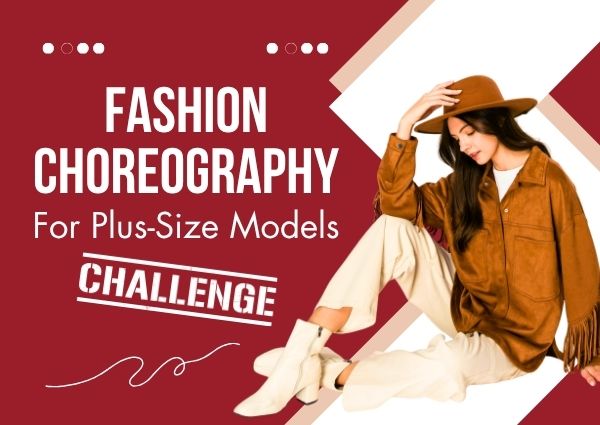At Babla Kathuria, we believe that fashion is for everyone—and that choreography should celebrate every shape and size. Here’s a deep dive into the world of plus-size fashion choreography, the hurdles we’ve overcome, and the success stories that are setting new standards for inclusivity on the runway.
The Rise Of Body Diversity In Fashion
Once dominated by rigid size expectations, fashion is finally embracing body diversity. Major designers, global fashion weeks, and influential brands are proudly featuring plus-size models—not as token additions, but as confident showstoppers.
But the runway wasn’t always ready for this shift. From tight choreography patterns to stage designs that didn’t accommodate different body types, early efforts at inclusion were often clunky. That’s where choreography became a crucial factor in ensuring plus-size models were presented with dignity, style, and power.
The Choreographer’s Role: More Than Just Walk Training
Fashion choreographers are responsible for more than synchronized steps—they are narrative builders. Every walk, pose, and pivot tells a story. And when that story includes plus-size models, the choreography needs to be adaptive, thoughtful, and empowering.
At Babla Kathuria, our goal has always been to:
- Showcase confidence, not conceal curves.
- Design sequences that celebrate individuality, not standardization.
- Break the myth that fashion choreography is one-size-fits-all.
Challenges In Choreographing For Plus-Size Models
Despite positive shifts, choreographing for diverse body types still comes with unique challenges:
1. Standardized Routines Don’t Always Fit
Traditional runway routines are often based on the proportions, pace, and movement styles of straight-size models. For plus-size models, these may not feel comfortable or flattering.
Solution: We customize every routine. Choreography is customized, not predetermined, whether it involves changing stride length, implementing various power poses, or perfecting turn timings.
2. Confidence Can Be a journey
Many plus-size models are relatively new to mainstream fashion. For some, this is their first runway experience, and insecurities can surface in rehearsals.
Solution: At Babla Kathuria, we build confidence step-by-step. Models can feel stage-ready on the inside and out with the help of posture workshops, private walk training, and positive reinforcement.
3. Wardrobe Functionality
Sometimes, outfits designed for plus-size models are not runway-friendly—too heavy, restrictive, or poorly structured, making movement difficult.
Solution: We work hand-in-hand with designers and stylists to test movement early in fittings, and suggest adjustments when necessary. Our choreography complements—not competes with—the garment.
Triumphs Worth Celebrating
With every challenge comes a breakthrough. Here are just a few wins we’re proud to share:
Powerful Walks That Go Viral
We’ve seen plus-size models go viral on social media because of a single strong, fierce walk—choreographed specifically to highlight their personality and presence.
Standing Ovations From Fashion Week Audiences
From Delhi to Dubai, we’ve had audiences rise to their feet to applaud inclusive lineups where choreography made every model look like a queen on the runway.
Boost In Brand Perception
Designers who welcome variation in size frequently experience an improvement in their brand image and media coverage. Inclusive choreography sends the message: “We design for all, and we celebrate all.”
Choreography Tips For Working With Plus-Size Models
If you’re planning an inclusive fashion show, keep these tips in mind:
- Celebrate curves with confident pauses and bold poses.
- Avoid overly fast transitions or tight runway sequences.
- Use a variety of motions to highlight the model’s individuality.
- Keep communication open—ask for feedback on what feels natural.
- Always rehearse in the final outfit and footwear.
These small changes make a big difference in how plus-size models feel—and how audiences perceive them.
The Future: From Inclusion To Normalization
The goal isn’t just to “include” plus-size models. It’s to normalize their presence on every stage, in every show. Choreography must continue to adapt, lead with empathy, and innovate to create space for every body.
At Babla Kathuria, we’re not here to follow trends. We’re here to shape the future of fashion—one inclusive step at a time.
Every step taken by a plus-size model on the ramp is a step toward breaking stereotypes, building representation, and redefining beauty. And behind that step is choreography that understands, respects, and celebrates difference.

